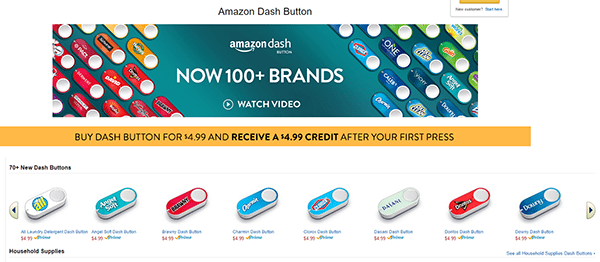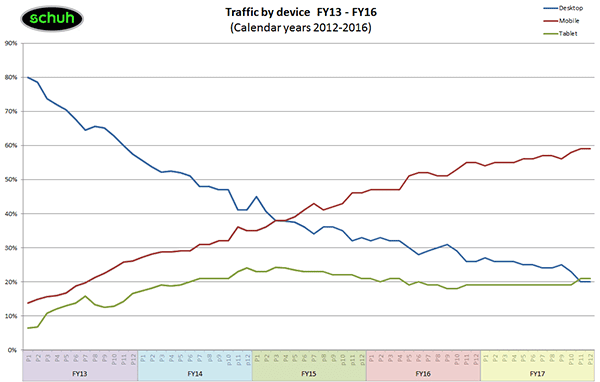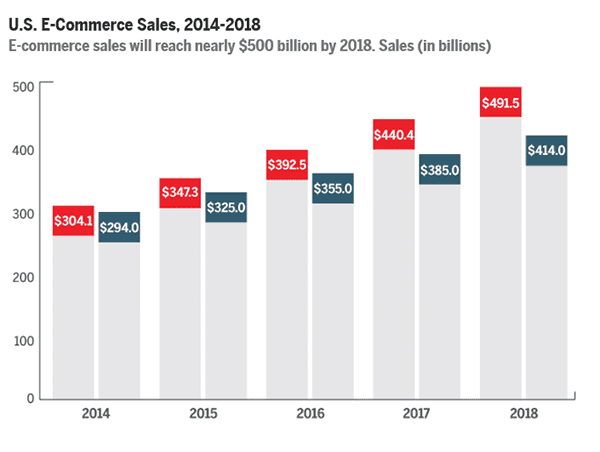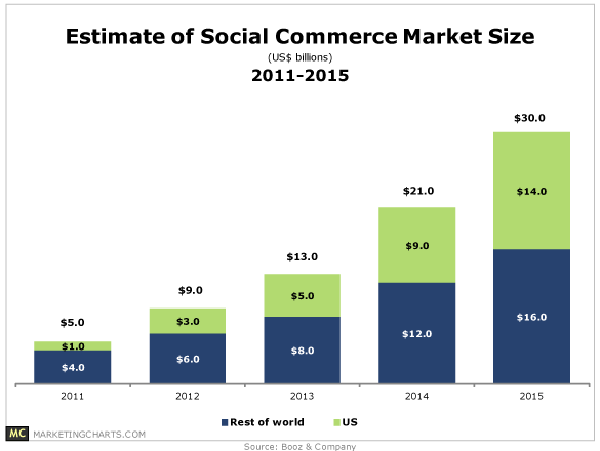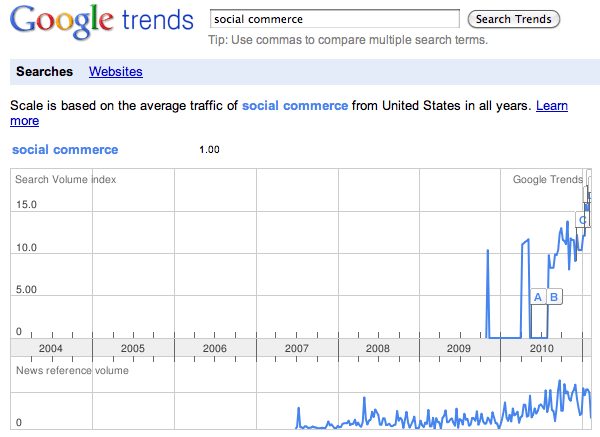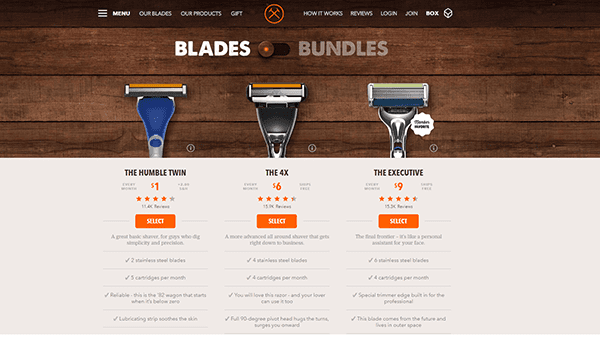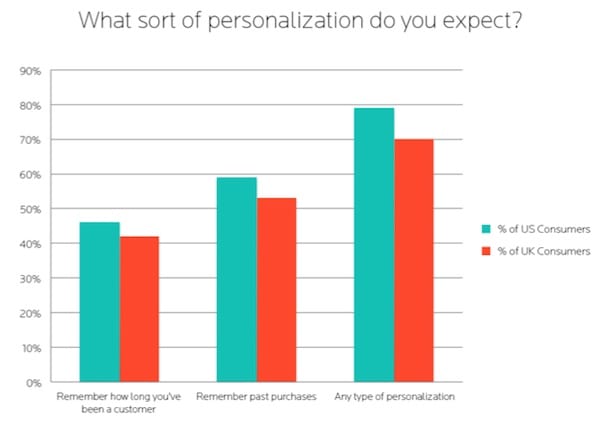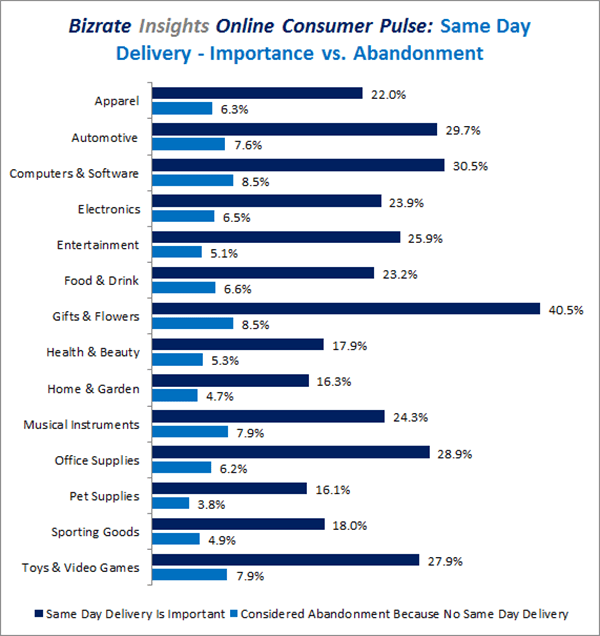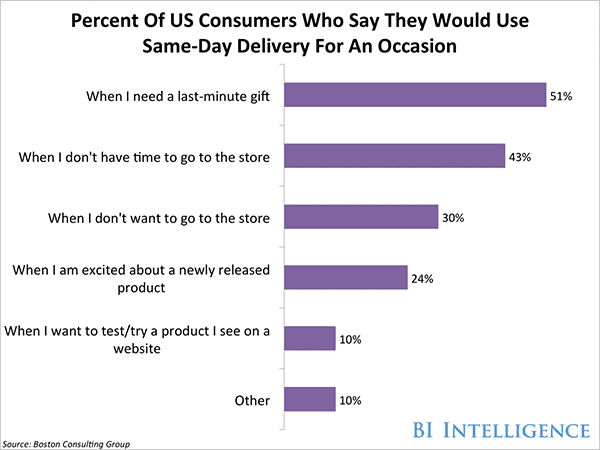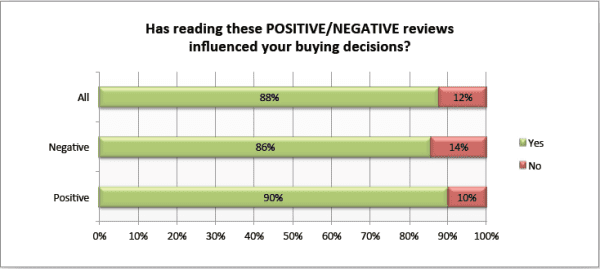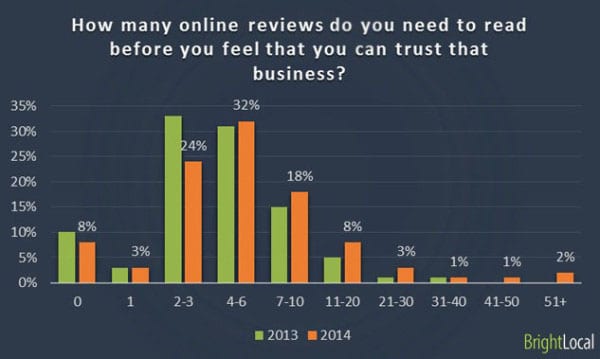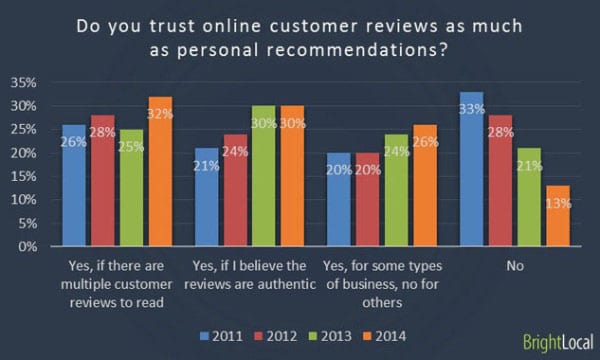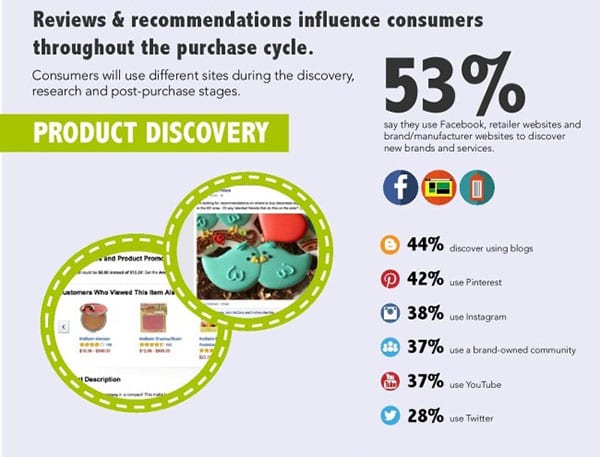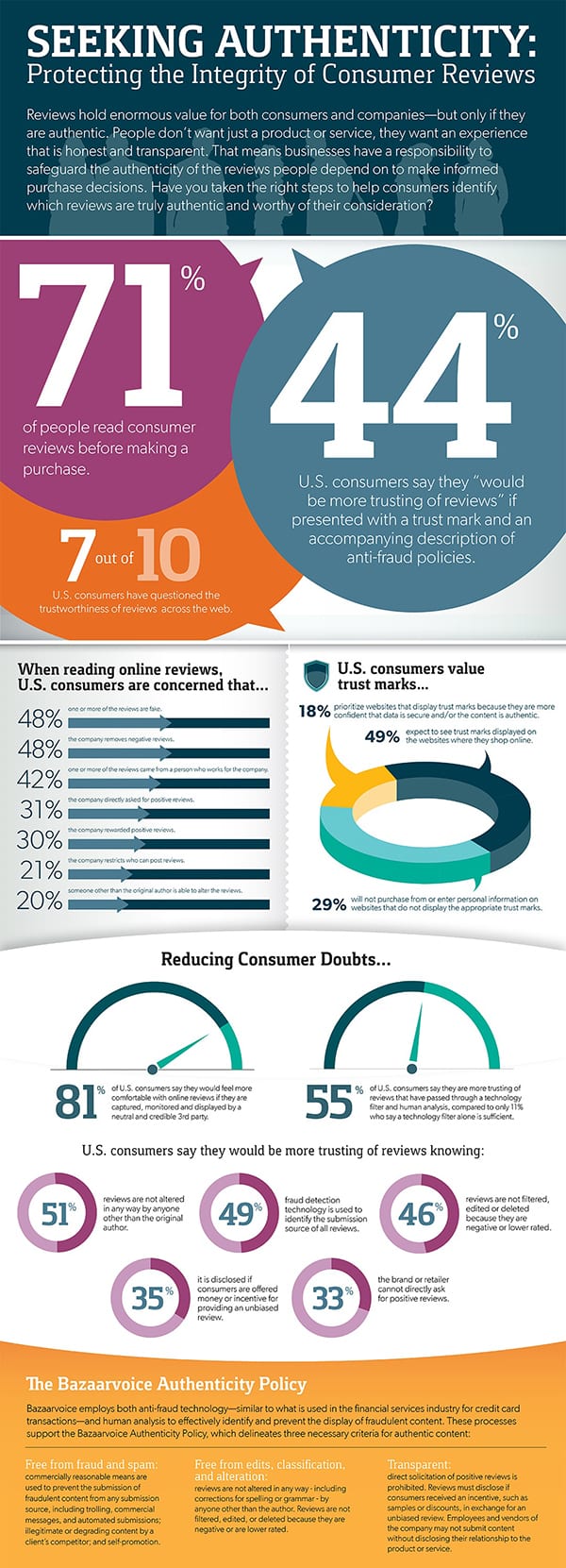Ecommerce Trends to Follow in 2017

What are the current biggest ecommerce trends for 2016, and what can we expect as we head into the latter portion of this year and the early part of 2017?
Join us as we take a very in-depth look at what’s trending now and what you should keep your eyes peeled for in the months to come. If you are not getting on board with these trends just yet, you may want to consider adding a few of them to your routine to attract more traffic and get more conversions.
Contextual Shopping
Think about contextual shopping in this regard: it’s live-action, data-fed shopping at its finest. Yep, you guessed it, it’s the most conducive format for sales ever derived since ecommerce’s very inception. According to Tech Crunch, it could very well be the wave of the future, too.
Contextual shopping is already being embraced by juggernauts like Amazon, found in their growing array of Dash Buttons. Such novelties track how much of a product, like laundry detergent, that you are using and remind you to place orders when you are running low. In Amazon’s version, you merely press the button to replace an order and it’s automatically charged to your card.
Since this format is still relatively new to ecommerce, there are no solid contextual shopping statistics available just yet. But imagine how services could provide smartphone apps that send you reminders and even deals when you are running low on the products that you use the most. In this regard, you can imagine how effective and profitable such an approach may be.
Mobile Centered Approach
It’s already old news that mobile searches are more prominent than desktop searches, with over half of all searches being conducted from a mobile device. But what about shopping and sales? What’s the comparative scale on these?
Just last November, during the height of the holiday shopping season, Business Of Fashion reported that smartphones were outdoing desktops for shopping.
During the 2015 holiday shopping season:
- 56.9% of all traffic was driven from mobile devices.
- Mobile sales increased by 36.1% from the year prior.
- Adobe says that as much as 45% of all holiday shopping traffic is from mobile.
For 2016, expect a similar influx in sales. As ecommerce becomes more optimized for the shopping experience, many buyers will prefer to enjoy one-click purchases with convenient social logins to check off their holiday shopping list. In all reality, this has been a long time in coming. The simple logic is this: your smartphone is always with you, your desktop and tablet are not.
Social Commerce
Social media has changed everything we ever thought or knew about online marketing. In a sense, there is a little bit of irony here. That’s because the early, fledgling days of the internet were actually all fed by social media. What’s that you wonder … how is this possible?
Because AOL was really the first ISP. If you recall those bulky CDs that would come in the mail promising you so many “free trial minutes” (yes, you paid by the minute to use terrible dial-up services to access the internet, way back in the day), then you already know what we are talking about.
Basically, the internet began as a social commerce platform that was powered by AOL and its rival, CompuServe (remember that age-old name?). Then, it fanned out and slowly became the information superhighway that it is during the present day. But, suddenly, along came the likes of Live Journal, Myspace, Blogger and, of course, Facebook and a long list of others.
Today, the web is dominated by thousands of social outlets, the majority of which remain as social bookmarking services. As marketplaces have expanded and ecommerce has taken center stage as the more convenient, always-open online shopping destination, newer social commerce trends are emerging. Here’s what you should look out for in 2016 and beyond, a continuation of our previous run down of the most pertinent social commerce statistics from 2015.
Why Social Commerce is Important
Social commerce represents a vast portion of the revenue that’s generated by ecommerce. According to eMarketer, social commerce revenue has grown from a humble $5 billion in 2011 to eclipsing $30 billion in 2015, just four years later. Few other industries can tout such growth.
But the numbers are all changing. For the years 2014 all the way through 2018, revenue is predicted to increase by enormous margins. Fed, of course, by the innate consumer desire to shop online. In the U.S., it’s being predicted that ecommerce sales will balloon from the healthy $325 billion that was generated this past year all the way up to an estimated $414 billion by 2018. Of that number, social commerce will account for as much as 10% in the coming years.
Seamless Shopping Experience
One of the reasons why social commerce trends have taken such a strong shape is because they recreate the offline shopping experience for consumers. According to YotPo, emotionally connected brands have more loyal shoppers and followers, and enjoy greater revenue streams as a result.
This is because these brands personalize the shopping experience, adding an emotional value and attachment that’s shared on social media, thus earning them loyalist consumers, who in turn many times also become evangelical brand ambassadors. A good example is the Share-a-Coke campaign, which personalizes the way that a soft drink can be purchased for a friend, and that has been screamingly successful as a direct result.
Curated Shopping
Consumers have made it apparent that they want a curated shopping experience. Taking the bull by the horns are shopping services/sites like AhaLife. Their missions statement reads as such: “We scour the globe to find exceptional objects for every aspect of your life. Shop from 1,000+ designers and artisans in 45+ countries.” They also cater to the consumer demand for free shipping and hassle-free and complimentary return shipping on all orders.
Online Reviews Will Dominate Referral Traffic
Online reviews generate tons of referral traffic and help populate ecommerce sites with a steady stream of traffic, too. And they also are going to be one of the most prevalent social commerce trends that we see in 2016.
According to Econsultancy:
- 61% of customers read an online review before they make a purchasing decision.
- 63% of consumers are likelier to make a purchase from a website that has user reviews.
- 105% chance of a customer converting during a visit when customer questions and reviews are offered.
- Consumer reviews are 12 times more trusted than product descriptions.
- Reviews have the ability to produce at least an 18% uplift in sales on any given ecommerce site.
Pinterest Impulse Purchases
Pinterest has recently entered the fold as the newest social commerce platform. Previously, they were merely a cool image bookmarking service. But according to Proforma, the new “Buy Now” feature on Pinterest has the ability to reach the more than 2 million people who post pins daily.
What’s more, 93% of Pinterest users plan their purchases from the pins they find on the site, providing a viable $50 average referral order value. Expect all social media sites to generate substantial revenue in the coming year, with sites like Polyvore, Instagram, Pinterest, Facebook, Reddit and others leading the pack for greatest referral value, as is demonstrated in the below chart that reflects the current average order value of these sites.
Omni-Channel Buying Experience
Of course, we need not overlook the value of omni-channel buying as the most coveted of all emerging social commerce trends for this year. This notion is underscored by a Fast Up Front publication. They say that the top 500 retailers worldwide cashed in on a staggering $3.3 billion in revenue that was earned from omni-channel selling, namely driven by social commerce, and that was back in 2014. Imagine what that number will be just two years later?
From 2013 to 2014, this massive growth represented a 26% year-over-year increase. By comparison, during that same time, ecommerce grew just 16%. However, social platforms were able to muster a strong referral increase to the tune of 200% in the same timeframe, telling of the profit and growth propensity for this marketing option. So what did 2015 look like? Take a look at this chart below to get a better idea. Then imagine what the year ahead holds.
Social Commerce Will Expand
Speaking of the market size, social commerce is set to explode this year, according to Marketing Tech News. Cited in their publication is a study of 100 UK marketers. The respondents yielded some rather interesting predictions for 2016 and forward.
- 52% say that social commerce will be the fastest growing trend this year.
- 49% say that location based marketing is the new trend for the New Year.
- 43% say that predictive targeting is the next big trend.
A quick look at current ecommerce revenue yields helps us better understand just how big a bite social commerce can chomp off ecommerce in 2016.
To sweeten the pot even further, Social Media Today explains that social commerce made the leap from a $3 billion market share to an astounding $14 billion market share between 2012 and 2015. This amounted to 33% of consumers acting on a promotion they found on the social media channel of a particular brand. But, they also highlight the fact that Facebook was responsible for generating 85% of these referrals.
Social Networks Will Embrace Ecommerce
Think back to 2012, and there wasn’t a Facebook “Buy” button. There was not a way to make a purchase from something you saw on Twitter, much less even any ads to view. And, of course, Pinterest had no “Buy” buttons or sponsored pins, either.
But PFS Web says that these buttons have helped cement the ongoing future interest of social commerce moving forward. Facebook is currently testing a “Sell” feature, while Pinterest just added an “Install” button, and Twitter is in testing out their very own “Buy” button. Imagine what the future holds when you can shop from your preferred social media outlet in just a few clicks?
Growth Will Exceed 25%
With all of these social commerce trends and predictions, what about real projected growth?
A September 15th, 2015 Business Daily Article interview a few leading experts to get their take on it. This is what the industry leaders predicted.
“Most [e-commerce companies] have both their social network and a ‘store’ in their hands, and social commerce provides a new channel to enable a transaction,” said Dan Forno, vice president of client success and consumer engagement at BrandShop, a provider of branded digital commerce solutions. “This will be a great opportunity to engage with consumers in a way that is both brand-building and profitable.”
“Shopping is inherently social, but this aspect has disappeared in recent years due in equal measure to the growth in ecommerce and an ever-growing list of consumer distractions and obligations,” added Liat Zakay, founder of the Donde Fashion search engine app. “Advances in social commerce are bringing the fun and sense of community back to shopping, but instead of in malls, [people] are shopping from their phones … on the timelines and terms that work for their busy schedules.”
Image-Heavy Stores
Shoppers want images. After all, the internet takes away the ability to touch objects, and you are limited with two-dimensional viewing. These two integers account for a large majority of the reason why products are returned online by consumers. But some stores are taking the bull by the horns and countering this by offering an image-heavy approach.
Now we would say that Amazon is a contender here, but this is limited by the amounts of images that the individual vendors place on any given listing, which is at their discretion.
Reasons why images sell more products are as follows:
- Less text for the shopper to read and worry about.
- More white space to ease the eyes in between images, text and call-to-action, which according to Human Factor International improves comprehension by 20%.
- Better visualization of the product to improve conversions and decrease returns by properly representing the product from the start.
A look at this Dollar Shave Club landing page is telling. Note that images take up the most space. There is ample white space in between images and text. And, the call-to-action is clearly visible in orange lettering with pricing equally as visible, reinforced by the imagery.
Personalized Shopping Experience
Shoppers are increasingly demanding a more personalized shopping experience in 2016, an ecommerce trend that won’t be bucked soon and that will continue well beyond. An Agile One survey concurs this. After polling over 3,000 participants that were shoppers located in the U.S and in the U.K., it was found that 70% of consumers want more personalized shopping experiences overall. Leading the pack, unsurprisingly, is Amazon, which has become the “gold standard” of personalized shopping experiences online, a trend that this juggernaut marketplace will certainly continue to dominate for decades to come.
- 79% of shoppers want more personalized shopping experiences.
- 50% of consumers want ecommerce stores to remember previous purchases.
- 66% of online shoppers want emails that offer discounts on products that they have bought in the past.
- 51% want to be offered loyalty rewards on future purchases.
- 52% of millennials want their birthdays to be remember from an online store.
- 66% of shoppers want display ads to be personalize to their shopping interests.
Faster Delivery, Free Shipping
Free shipping has been a strongly voiced consumer demand, a trend that won’t be going anywhere, anytime soon. In 2016 and beyond, comScore says that offering a free shipping threshold leads 58% of shoppers to add more items to the cart to qualify for free shipping. According to UPS, four out of five shoppers want free shipping to be offered at the time of purchase.
We’ve already offered in-depth coverage of the free shipping threshold so that you can get a complete breakdown of its benefits to your bottom line. But what about faster delivery options and the coveted same-day delivery method that many shoppers crave, and that’s been part of Amazon’s magic formula for grabbing conversions over the years and adding new Prime members in troves daily?
An Internet Retailer report finds that same-day delivery is important to 19% of shoppers. Furthermore, the report says that “buyers expect to pay about $15.78 for same-day delivery, but their expectations vary significantly by category.”
- In a related Business Insider report, it was found that 70% of Prime Now customers (an Amazon service that offers free delivery in two hours and one-hour delivery for an additional $7.99 fee) use the service more than once per month.
- 24% are using the service once per week.
- 60% of Prime subscribers have used the service to purchase media.
- 93% of online shoppers in the U.S. like same-day delivery because it’s fast.
Improved Customer Service
Customer service is the cornerstone of any successful ecommerce store. Customers increasingly want help during the checkout process via live chat assistance, and also want a toll-free number they can call at any time to speak with a live human being. Live-action customer engagement will be a pillar of customer service as a 2016/2017 ecommerce trend, according to Engadget.
There are some other very integral customer service statistics that you should be aware of that will continue to become trendsetters during the later portion of this year and beyond. As the chart below shows, 60% of customers would avoid making a purchase based solely on poor customer service.
- One-third of customers don’t believe your business pays enough attention to their needs (Echo 2012 Global Customer Service Barometer).
- Only 7% of consumers believe that customer service exceeds their expectations. (Echo 2012 Global Customer Service Barometer).
- 42% of customer service agents fail to resolve issues (Forrester).
- 45% of consumers will abandon a shopping cart if their customer service needs are not immediately met (Forrester).
- 89% of customers will stop buying from you after one bad experience (RightNow Customer Experience Impact Report).
- Consumers are twice as likely to talk about a bad experience as they are a positive one (2012 Global Customer Service Barometer).
- Service related problems will send your customers to your competitors four times out of five (Bain & Co.).
- Fast customer service results in a 33% referral rate (Nielsen-McKinsey).
- Ecommerce customer support is preferred 61% by phone, 60% by email, 57% by live chat, 51% by knowledge base and 34% by click-to-call (eConsultancy).
- 45% of companies offering web or mobile self-service reported an increase in site traffic and reduced phone inquiries. (CRM Magazine)
- 83% of your shoppers require support during the purchase process (eConsultancy).
- 10% customer retention improves company value by at least 30% (Bain & Co).
Online Product Reviews
Online product reviews are becoming more relied on by online retailers to help close the sale. But why are these reviews so effective, and can they really help you attract more customers and sales? We’ll dig in to provide the answers you need.
Perhaps one of the most convincing reasons to add online product reviews to your online store’s product pages is this: conversion rate increase. According to a study that was conducted by Bazaarvoice, which gathered data from over 57 million reviews and 35 billion product page views, when visitors interact, conversion rates increase by as much as 58%.
The study also yielded some other interesting findings:
- One review added to a product page can improve conversions by 10%.
- 30 reviews added to a product page can improve conversion by 25%.
- When over 100 reviews are added, sales lift increases by 37%.
- Average order value increases to 3% from product reviews.
Product Reviews & SEO
Another powerful reason to consider adding verified product reviews to your online store is because of the SEO benefits that they offer. According to Google, fresh, unique content is one of the key metrics and integers utilized by their algorithms for ranking pages.
Basically, the more unique content that you have that is directly relevant to your store’s offerings, the likelier you are to rank for any given page. In this case, it can result in getting your product pages or landing pages that host these reviews ranked higher in the search engine results.
In the aforementioned Bizaarvoice study, it was noted that product pages that hosted unique review content usually experienced a 15%-25% increase in search traffic as a direct result. Since the average consumer review is between 100-200 words, imagine if you had 20 reviews that were adding 4,000 or more words of unique content to your landing page. How could this help you outrank a competitor that has far less content? In addition, the reviews continuously serve to add fresh, new content, thus helping you in an ongoing manner, too.
Influencing Buying Decisions
Consumers shopping online do not have that much to go on. For example, they are unable to touch the products or see them in three dimensions. They instead can only rely on the pictures that you provide, any other media like video, and by what product reviews exist, if any. A survey that was conducted by Dimensional Research for ZenDesk found that when a positive product review was present, 90% of consumers were influenced by it.
What’s more, consumers stop and take the time to actually read reviews before they make that purchasing decision, explains a Search Engine Land article. About 85% of consumers read as many as 10 online reviews just to determine whether or not they can trust a business. While this particular study focused on local businesses, the same can be said for online businesses and online reviews – where buying decisions are warranted out of consumer trust for the products or services being offered.
But what power does an online review have in the mind of the beholder? And is this influence as powerful as, say, a personal recommendation from a trusted friend or family member? According to the chart we’ve included below, yes, it is. About 88% of consumers trust online reviews as much as they trust personal recommendations.
Online Reviews Are Accurate
One might ask, what about fake reviews or altered ones or even paid ones (something that Amazon has been stamping out as they aim to clean up the clutter from their marketplace). Does the dissemination of these fake reviews take away from the candor and efficacy of the legitimate ones?
According to a comScore study, you don’t have to worry about that. That’s because they’ve determined that 97% of people who made a purchase online that was based upon a review they read later found that review to be entirely accurate in influencing their purchasing decision.
Improve Consumer Confidence
While consumers are eager to purchase products from brands that they know and love, they don’t place as much clout in the product descriptions offered by the manufacturers as they do in what other consumers say, namely those who have purchased the products, explains eMarketer.
In fact, a BrightLocal poll corroborates this with a recent 2015 study that found that two-thirds of online users place more trust in a business that has positive online reviews. And eConsultancy says that an average sales uplift of 18% is realized from positive online reviews of a business or a product.
The Power of Social Proof
One powerful aspect of online product reviews is that they can be shared via social media, where the most recent social media ecommerce statistics show that they can derive a healthy referral revenue. With think tanks like Power Reviews saying that over 70% of Americans look at product reviews before making a buying decision, social proof is indeed in the conversion pudding. Take a look at this chart below for even more clarity.
Online Reviews Improve Profits
Take a look at this infographic, which culls data from many of the sources that have been provided for you in this write-up. Use the information it provides to better understand how powerful online product reviews are, and why you should leverage this power with your online store in 2016 and beyond.
No-Questions-Asked Returns
Expect the return policy to be a hot topic in 2016 and beyond. Shoppers have increasingly made it clear that they expect returns to be convenient and hassle-free. So what do the most current statistics say about this and why is it a trend now and well into the future for ecommerce?
If you don’t offer a lucrative, convenient and efficient, consumer-friendly returns process, you won’t likely be attracting many customers for very long to your online business. Instead, your customers and many prospective shoppers will just take their business somewhere else.
Large marketplaces like Amazon and other stores that have a strong online presence (such as Best Buy and Target) provide consumers with a long list of options as to where they can shop. The one thing that can help you secure the sale more often than not is a unique product and consumer confidence. When approaching this mindset, it’s important to understand that if you make returns difficult, people will just shop at a store that makes returns easy.
Moreover, if you make returns simple and efficient, you actually stand to make more money off consumers in the long run. This comes in the form of increased consumer spending, improved customer loyalty and long term retention, as is highlighted in our most recent white paper: Can Product Returns Actually Make You Money?
Consumers Wants Easy Returns
According to a recent report that was published by Forrester Research, approximately 81% of all online customers desire a simplified process for returns management. The study was actually conducted on behalf of UPS to help better gauge and assess how customers responded to good returns policies – such as those which are offered by leading retailers like Zappos – and inefficient returns policies (offered by other, not-to-be-named, retailers) that are often lamented by customers.
Even though this case study is dated back to 2008, the metrics it highlights still remain true to this day. A more recent 2014 ComScore study that was conducted found similar numbers on returns, specifically noting that a vast majority of customers consider the returns policy a very important aspect to a positive online shopping experience.
So Where does your returns policy stand? And is it causing you to lose out on potential future profit windfalls?
Repeat Buyers Make More Returns
The aforementioned Forrester report specifically cited one key statistic that all ecommerce proprietors should be mindful of: customers who are the likeliest to facilitate these returns are also the likeliest to be repeat shoppers, and they tend to shop more online than other, one-off customers do.
In other words, about two times out of three, the shopper who returns a product will also be the same shopper who makes repeat purchases from your business. Implementing a hassle-free returns policy is not just good thinking, it’s integral to growing your bottom line and attracting new customers; not to mention with helping to retain your existing customer base, too.
Repeat Buyers Make More Returns
Repeat Buyers Make More Returns
Offering hassle-free returns is naturally the most ideal solution for appeasing your growing customer base. However, a few other related and important factors also shouldn’t be overlooked along the way, either, and are culled from our most recent white paper about online product returns.
- Over 63% of consumers read the online product returns policy before making a purchase (comScore).
- 81% of consumers want a convenient returns policy that is hassle-free with no return shipping cost (UPS).
- About one-third of all products ordered online are returned by consumers (WSJ), so understanding that returns are part of the buying process is important.
- When free returns are offered, purchases can be increased by up to 357% (CNBC).
- When return shipping fees are charged, 81% of consumers are less likely to make a future purchase (Upstream Commerce).
- Zappos gets 75% improved customer loyalty, repeat buyers from free returns, even though they charge more for their products (eCommerce Digest).
Share On:


